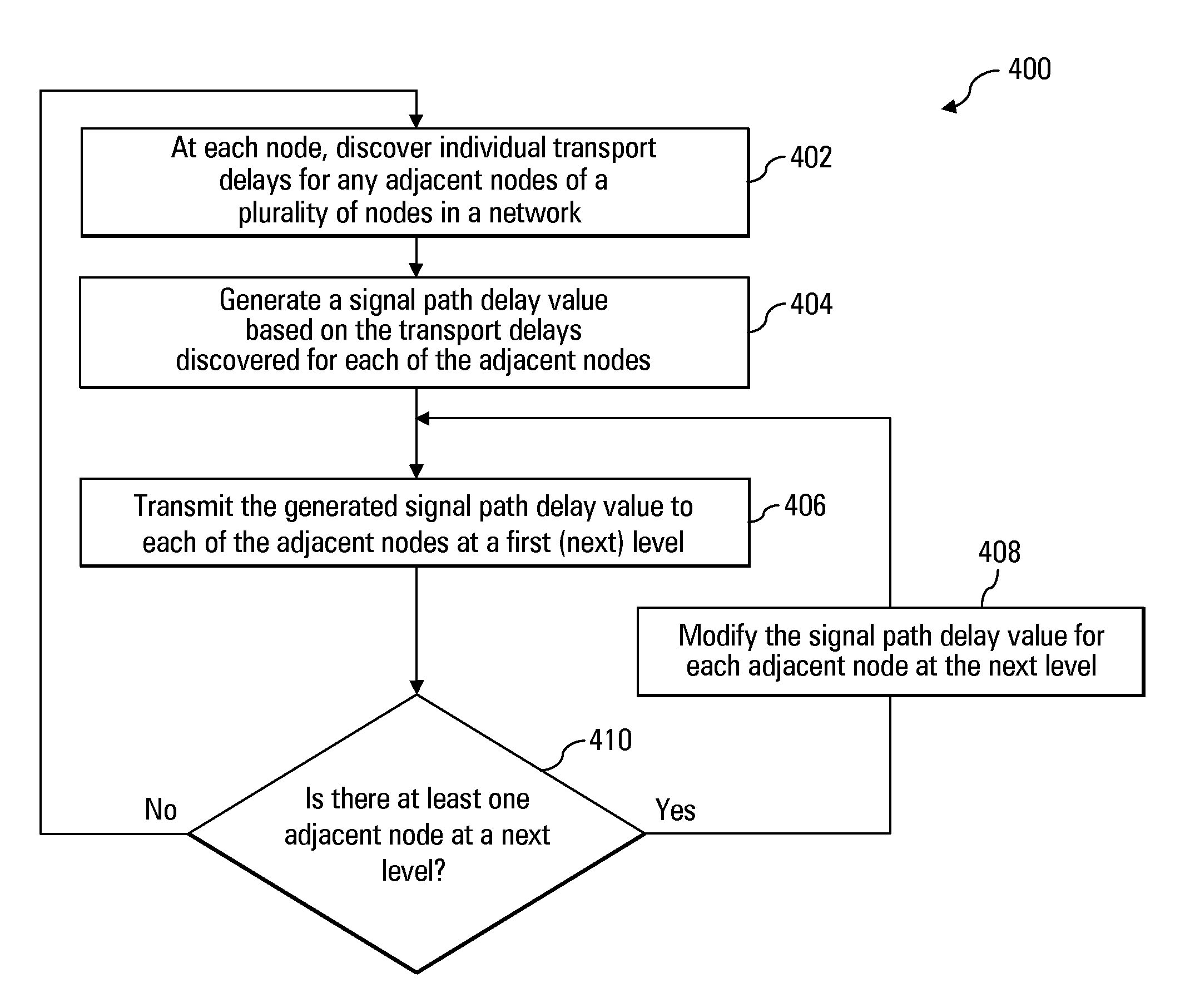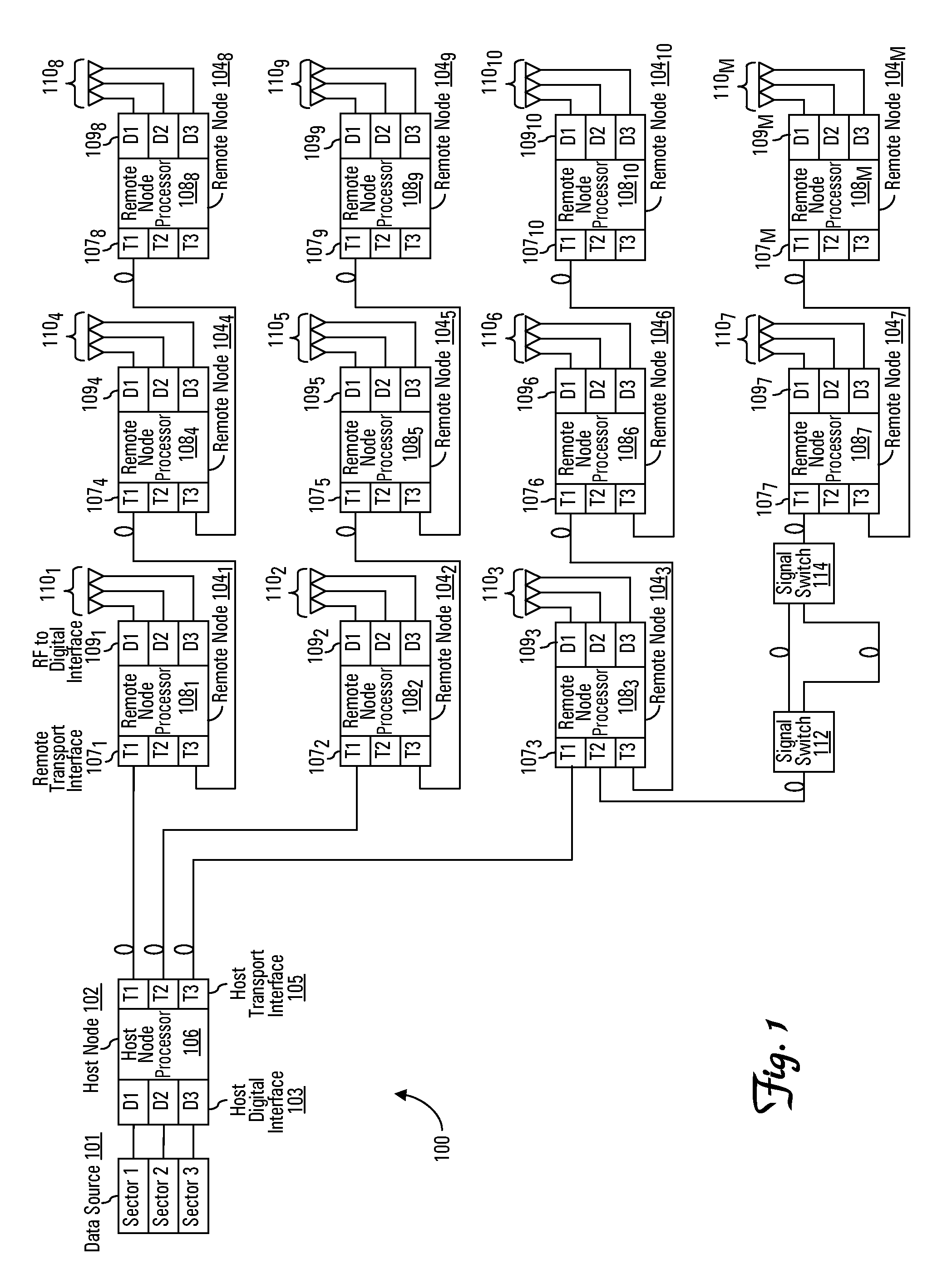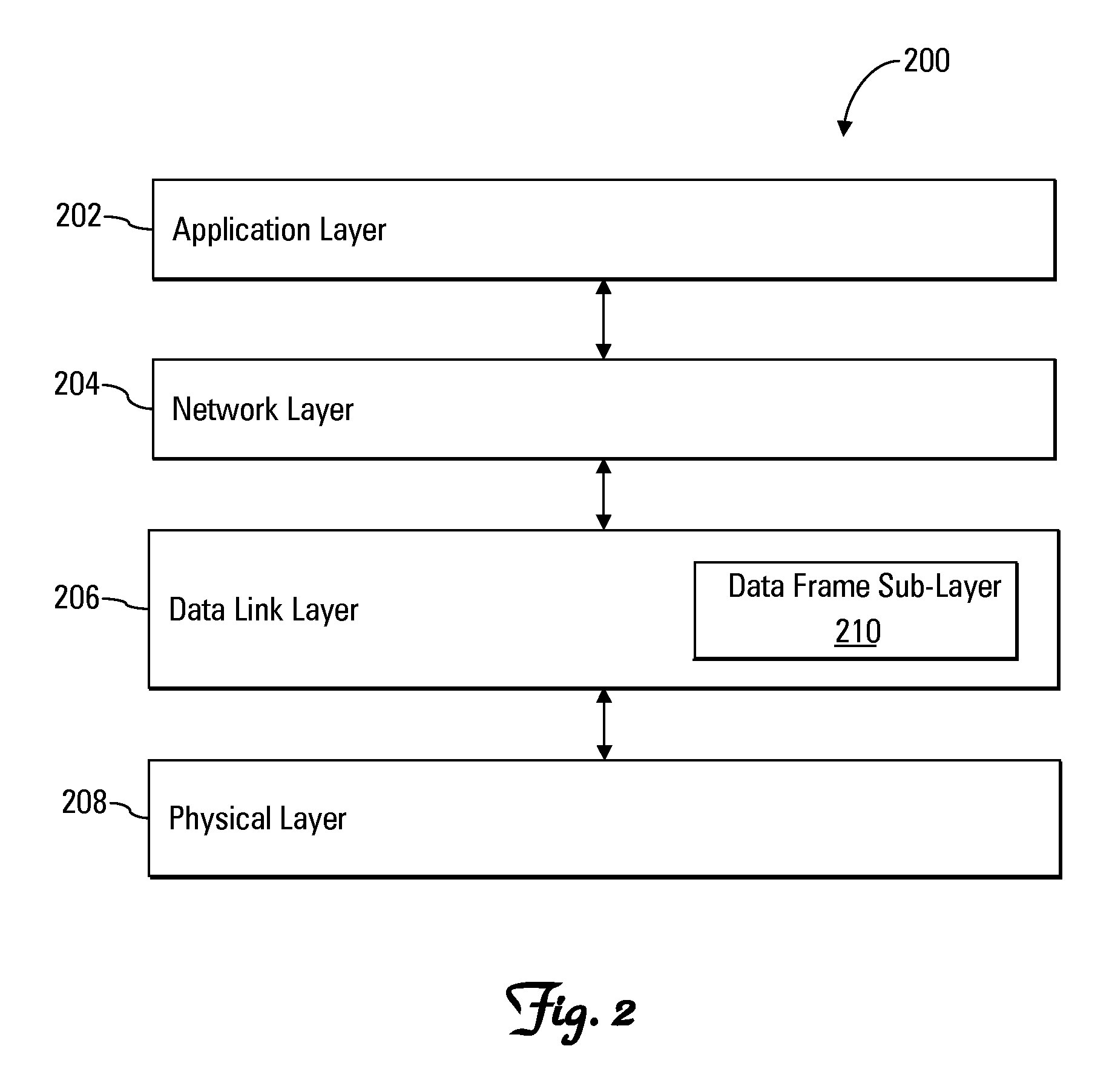Delay management for distributed communications networks
a technology of distributed communications and network management, applied in the field of delay management for distributed communications networks, can solve the problems of adding significant complexity and/or cost to the distributed antenna system, adding further complexity and cost to the operation of the distributed antenna system reliably and efficiently
- Summary
- Abstract
- Description
- Claims
- Application Information
AI Technical Summary
Benefits of technology
Problems solved by technology
Method used
Image
Examples
Embodiment Construction
The following detailed description relates to delay management for distributed communications networks, e.g., a distributed antenna system. The delay management discussed here enables a network manager to establish a desired delay at a plurality of nodes in a point-to-multipoint communications network with a suitably high degree of repeatability and control. The desired delay can be for each of the nodes collectively or for each individual node. Advantageously, the communications network discussed here uses a distributed approach to determine a signal path delay from a host to each node in the system. This is accomplished at each node by discovering a transport delay (e.g., the travel time) over the link between the node and its adjacent (e.g., successive) nodes in the network. For example, each of the nodes learns the distance between itself and any downstream, adjacent nodes. Based on these transport delays between nodes, the nodes in the system cooperate to determine the signal p...
PUM
 Login to View More
Login to View More Abstract
Description
Claims
Application Information
 Login to View More
Login to View More - R&D
- Intellectual Property
- Life Sciences
- Materials
- Tech Scout
- Unparalleled Data Quality
- Higher Quality Content
- 60% Fewer Hallucinations
Browse by: Latest US Patents, China's latest patents, Technical Efficacy Thesaurus, Application Domain, Technology Topic, Popular Technical Reports.
© 2025 PatSnap. All rights reserved.Legal|Privacy policy|Modern Slavery Act Transparency Statement|Sitemap|About US| Contact US: help@patsnap.com



